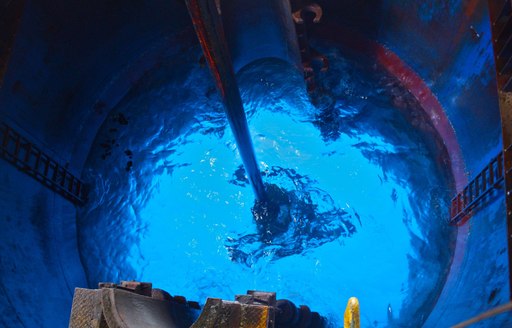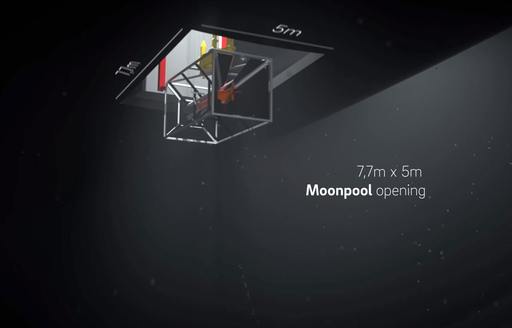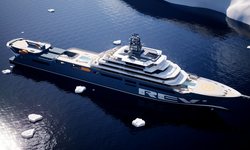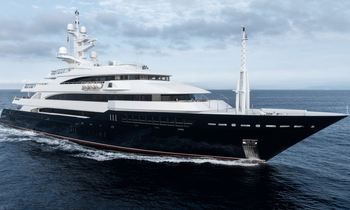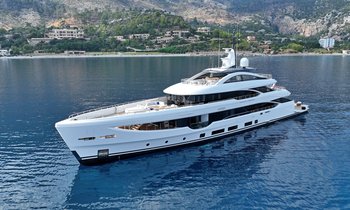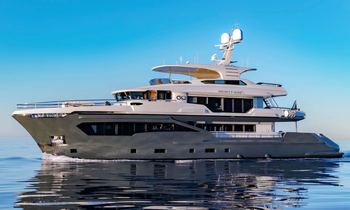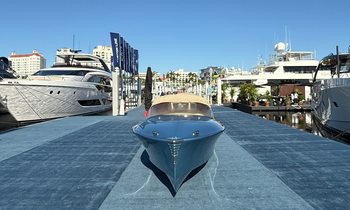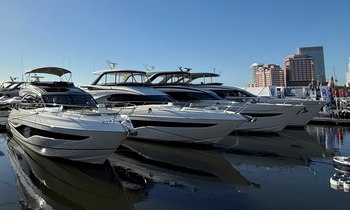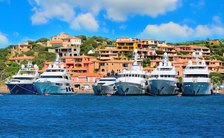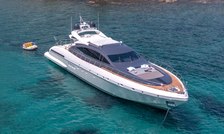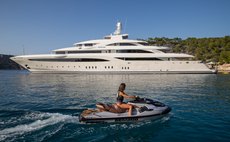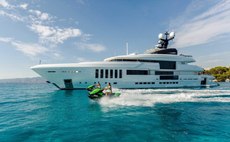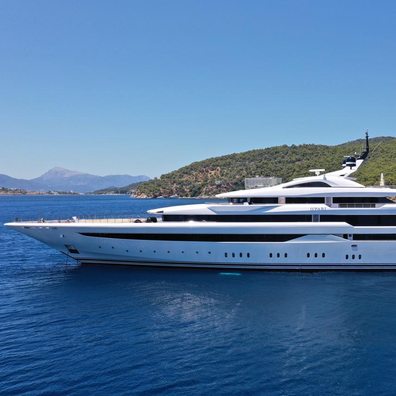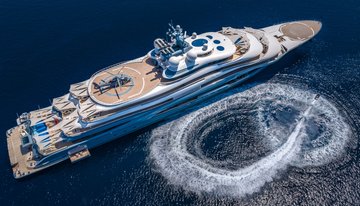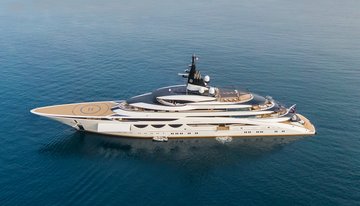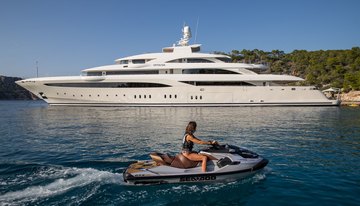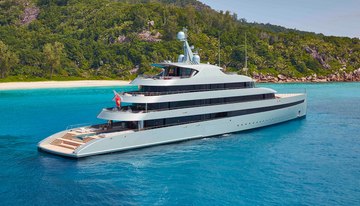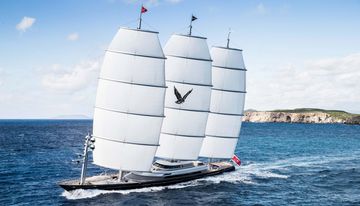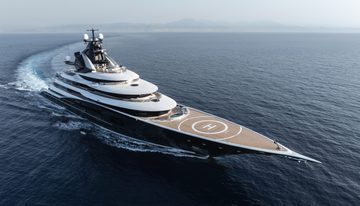With a core focus on marine research and conservation, the 183m/600ft motor yacht REV will have the ability to collect and generate energy from ocean plastics. She will become the world's largest yacht upon completion, and will be available for private yacht charters in some of the most remote regions on earth.
Currently in the final stages of construction, research expedition vessel REV (or REVOcean) is pioneering the latest in technological innovation to create a new generation of superyacht.
She will be equipped with some of the most impressive on-board features ever seen on a yacht, including the ability to collect and generate energy from 5 tonnes of ocean plastics per day.
She will be used primarily as a research platform for studying the world’s oceans and finding solutions to problems including climate change, overfishing and plastic pollution.
REV has a gross tonnage of 17,440 tonnes and a length of 182.9m, or 600ft.
Currently the longest ever superyacht is 180.65m (592ft) superyacht AZZAM, while the largest yacht in terms of gross tonnage is 156m (511ft) superyacht DILBAR, with a volume of 15,917 gross tonnes.
REV knocks both of them out of the water, and will become both the largest and longest yacht in the world when she is delivered.
She has been commissioned by ocean research company Rosselinis Four-10, which is owned by Norwegian billionaire Kjell Inge Roekke.
Income for crewed yacht charters will go towards funding the yacht's future research operations.
Take a look at all the highlights and special features on board yacht REV.
REV will play host to six laboratories with multi-functional usage which includes dry, wet and chilled facilities for a range of different research purposes.
She will also have a huge 7.7m x 5m Moon pool in her hull. This wide opening will provide direct access to the water below, allowing underwater vehicles to be lowered and raised with increased ease and flexibility.
In total, around 4,000 square metres (the equivalent of 15 tennis courts) of on-board space is dedicated to research, which makes up around 40% of REV’s interior.
In summary:
- Six laboratories
- 7.7m x 5 Moon pool (opening in hull to allow submersibles to be launched and raised)
- On-board research space equates to 15 tennis courts
REV will use highly sophisticated technology to safely collect and winch live species of fish from around 3,000 metres below the sea’s surface.
The winches can maintain position and depth whatever the weather and sea conditions, making them reliable under any circumstances.
A live visual feed helps to identify the species, and the system can be adjusted to target a particular size of fish and release those that don’t match. They are transported on board REV through a pipe, and can then be released unharmed after being studied or tagged.
REV will also feature drop keels fitted with sensitive hydrophones which will listen out for marine mammals.
She also has a dive centre with a decompression chamber, air and nitrox systems.
In summary:
- Ability to collect live species from 3,000 metres below the sea
- Live visual feed allows those on board to identify the species
- Hydrophones listen out for marine mammals
- Dedicated dive centre
The yacht's hangar will house an impressive range of vehicles and accessories. These include remotely-operated water vehicles capable of descending to depths of 6,000m (almost 4 miles) with the help of a cord connected to REV.
REV will also have a fully autonomous underwater vehicles, which use sonar to scan the seafloor and pinpoint a predefined mark. These can be extremely helpful when finding shipwrecks or other irregularities on the seabed.
She will have a submarine and dedicated equipment to measure CTD (conductivity, temperature, and depth).
In summary:
- Autonomous and remotely-operated submersibles.
- Submarines
REV has two helipads for drones and helicopter surveys. One is located on the aft deck and the second is on the foredeck.
They will make it even easier to access and disembark the yacht, particularly when it comes to stepping on shore in high-latitude regions.
Dual helipads and helicopters are also essential for exploring Polar regions, creating a back-up should there be any kind of mechanical failure, giving REV full global access.
The yacht's exterior style is the work of world-renowned designer Espen Oeino. Designed to balance the functionality of a research vessel with the elegance of a superyacht, her profile is streamlined and well-proportioned
H2 Design is responsible for the yacht's interiors. Jonny Horsfield, head designer, has said that he is embracing the unique challenges associated with a project like this, and hopes to create a holistic and calming interior.
In total, the yacht provides accommodation for 28 guests in 18 cabins with a complete crew of 54.
REV will boast an enormous auditorium with tiered seating to host up to 36 people. Fitted with an advanced sound system, the space will be perfect for lectures and knowledge-sharing events.
The yacht will also have a conference centre with two meeting rooms and a hot-swap desk arrangement which is designed to facilitate social interactions between research teams and other charter guests.
In summary:
- 36-person auditorium
- Conference centre with two meeting rooms
Environmental performance was a crucial component throughout the building of REV. She features the SeaQ Green Pilot, a fuel-optimising system that will allow the crew to reduce REV’s carbon footprint as much as possible.
She will also make use of a high-technology incinerator, which allows on-board waste and ocean plastics to be burnt in an environmentally-positive way with limited emissions.
Every 10 kilograms of waste burned will generate 110kWh of thermal power, which is used to supply REV with hot water. She will also have a heat recovery system which will generate fresh water through an evaporation plant.
Other key elements include an energy recovery rudder system, medium-speed engines, a direct drive diesel-electric propulsion system with batteries and an exhaust cleaning system.
In summary:
- Ability to collect and generate energy from ocean plastic
- Fuel-optimisation system
REV will be capable of complete autonomy at sea for up to 114 days, meaning she can be completely self-sufficient in terms of stock and fuel.
VARD estimates that she will have a range of 21,120 nautical miles while cruising at 11 knots.
For any research-related charters, she can accommodate 30 crew and 60 research personnel.
This piece will be updated as REV nears completion and delivery.
Interested in learning more about expedition charters? Please reach out to your preferred yacht charter broker for more information about chartering M/Y REV.
Some pictures are for illustrative purposes only.
RELATED STORIES
EDITOR'S PICK



